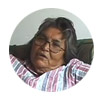Places | Suunéch'ii Kéch'iige (Montney)

Stories

Tommy Attachie, talking about the Dreamer Gaayęą. Suunéch'ii Kéch'iige (Montney), 2005.
Tommy Attachie talks about the Dreamer Gaayęą at Gat Tah Kwą̂, the former Montney Reserve, and about Dane-zaa gatherings at "The Place Where Happiness Dwells" located there. Gat Tah Kwą̂ (Montney), 2005.

May Apsassin, talking about Dane-zaa oral tradition and Beaver language revitalization. Suunéch'ii Kéch'iige (Montney), 2005.
May Apsassin talks about Dane-zaa oral tradition, how stories are passed down through the generations, and the importance of revitalizing the Dane-zaa/Beaver language. She laments that while there used to be a lot of people at Gat Tah Kwą̂ (Montney), there are now few elders left in the community. Gat Tah Kwą̂ (Montney), 2005.

Chief Gerry Attachie, describing how he and the band won compensation for the loss of IR-172, the former Montney Reserve. Hanás̱ Saahgéʔ (Doig River), 2005.
Gerry Attachie describes how he and the band successfully negotiated compensation for the loss of their reserve, IR-172, at Gat Tah Kwą̂ (Montney). He talks about how the Band's administrative and cultural centre was built with this money, and his hope for the survival of the Dane-zaa/Beaver language. Doig River First Nation Cultural Centre, 2005.

Madeline Davis, telling about Dreamers Dances at Suunéch'ii Kéch'iige (Montney). Doig River, 2005.
Madeline Davis tells about attending a Dreamers Dance at Gat Tah Kwą̂ (Montney) when she was a little girl. She recalls watching the Dreamer Nááchę (John Notseta) showing maps of Heaven to the people who had gathered there to dance, sing, socialize and tell stories. Hanás̱ Saahgéʔ (Doig River), 2005.
Songs

Tommy Attachie and the Doig River Drummers singing "Suunéch'ii Kéch'iige" by the Dreamer Gaayęą, 2004.
"Suunéch'ii Kéch'iige" ("The Place Where Happiness Dwells") was dreamed by Gaayęą and is sung here by the Doig River Drummers in 2004. This song has been passed along through oral tradition and maintained by our songkeepers. The song represents fond memories of a traditional Dane-zaa summer gathering spot above the Peace River at Gat Tah Kwą̂ (Montney). This gathering spot was selected by our people for their reserve lands in 1914 but was later taken away by the federal government.

Tommy Attachie singing a song by the Dreamer Nááchę (John Notseta), 2001.
Tommy Attachie singing a song by the Dreamer Nááchę (John Notseta), Petersen's Crossing, 2001. The Dreamer Nááchę (John Notseta) travelled from the Prophet River area to the Montney area from time to time to sing Dreamers' songs like this one for Dane-zaa gathered there.
Montney Photos:
Slide show not displaying? Click here to view images
Traditional Use:
Suunéch'ii Kéch'iige lies just north of the city of Fort St. John. The name means “The Place Where Happiness Dwells" and was a traditional summer gathering location and dancing ground for our Dane-zaa people until it became inaccessible to us because of non-Native settlement after WW II.
Montney Creek runs through Suunéch'ii Kéch'iige. This creek, and the agricultural community now located here, were named after our Chief Montney. He died here in 1918, at the age of seventy-two, during the Spanish flu epidemic that ravaged our people.
Elders such as May Apsassin, Tommy Attachie and Madeline Davis, remember how our people would gather there every summer to court, celebrate births, settle political issues, visit with relatives, and to drum, sing, and dance.
The Dreamer Gaayęą named one of his songs "Suunéch'ii Kéch'iige." When our songkeepers sing that song now, it reminds us of the importance of the Dreamers' Dances we held there. Gaayęą died at Suunéch'ii Kéch'iige in 1923 after falling off of a horse, and we continue to care for his grave here and follow his teachings.
Treaty No. 8:
In 1900 some of our leaders signed Treaty No. 8 not far from Suunéch'ii Kéch'iige at the Hudson's Bay Post on the Peace River below the current city of Fort St. John. We had been concerned by the influx of Klondikers coming through our lands during the Gold Rush as their use of our lands put pressure on our animal resources. Our leaders who signed Treaty No. 8 thought that it was a treaty of peace, and that it acknowledged their rights to hunt and trap on the land.
The treaty promised that reserve lands would be set aside for our exclusive use. In 1914, members of the Fort St. John Beaver Band, the ancestors of our Doig River and Blueberry River people, chose Suunéch'ii Kéch'iige to be our Reserve, because of its importance as a summer gathering location and dancing ground for us.
Colonialism and Loss of Lands:
We continued to gather at Suunéch'ii Kéch'iige every summer until 1945, when the Department of Indian Affairs (DIA), acting under pressure from the Veterans Lands Director to free up farmland for returning WW II veterans, convinced a few of us to surrender our reserve. The Indian Agent assured us this was in our best interest, and promised that in return we would receive land closer to our traplines.
By 1948, the land at Suunéch'ii Kéch'iige was being divided up and given to veterans. We were forced to stay at Alááʔ S̱atǫ (Petersen's Crossing), without a reserve, and send our children to school. In 1952 our reserves at Hanás̱ Saahgéʔ (Doig River) and Blueberry River were established and many of our people settled there.
The effects of these colonial policies meant that we slowly lost control of most of our lands. As Aboriginal people of that time, we could not legally use reserve assets to conduct business, raise funds for a lawyer, or vote. As we moved from an entirely resource based economy to one more dependent on cash, our lifestyle changed also. We did not enter the cash economy on equal footing, both through the paternalistic hand of the DIA, and because of prejudice and racism aimed at our people and culture.
Compensation and Renewal:
It was not until 1977 that a DIA officer discovered and reported to us that our subsurface mineral rights to the Montney Reserve had been mishandled by the DIA prior to the surrender of the lands to the Department of Veterans' Affairs. He told us that we could go to court to be compensated. Within a year, our Doig and Blueberry Bands began legal proceedings. It took twenty years of persistent legal action for us to reach our final settlement with the government. In 1998, we settled out of court for breach of trust and lost oil revenues. We received $147 million dollars in compensation.
Gerry Attachie was our Chief from the beginning to the end of this momentous twenty one year fight for justice. Listen to him talk about the process.
We are using the financial award from the Montney Case to assure a better future for our people. We have invested much of the money and set it aside for our community's use. We used some of this money to build our new cultural and administrative centre on the Doig River First Nation reserve. From this facility we monitor development on our lands and assert our Aboriginal and Treaty rights.


